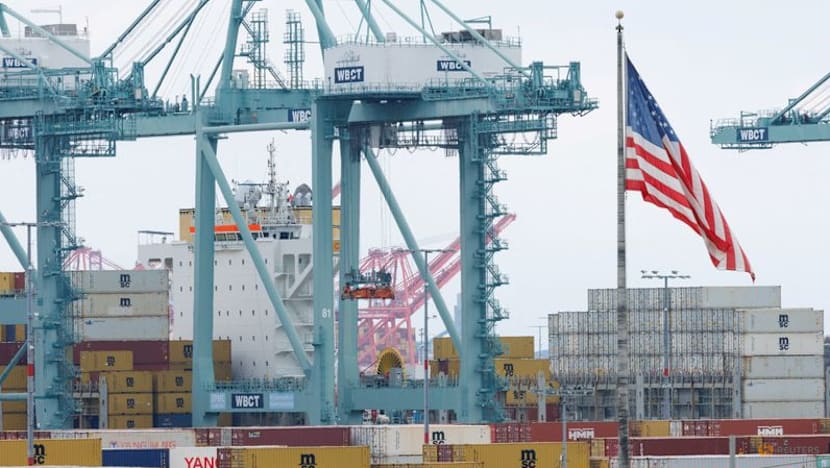China's exports suffer worst downturn since February as tariffs hammer US demand

Shipping containers from China sit at the Port of Los Angeles in San Pedro, California, US, on Nov 5, 2025. (File photo: Reuters/Mike Blake)
BEIJING: China's exports unexpectedly fell in October following months of front-loading to beat United States President Donald Trump's tariffs, giving voice to investor concerns over the broader economic impact of a rift in US-China trade ties.
Outbound shipments from the world's second-largest economy shrank 1.1 per cent last month, the worst performance since February, customs data showed on Friday (Nov 7), reversing from an 8.3 per cent rise in September, and missing a forecast for 3 per cent growth in a Reuters poll.
The figure was affected by a high base from last October when exports grew at their fastest pace in over two years, as factories began rushing inventory to major markets in anticipation of Trump's triumphant return to the White House.
Chinese exports to the US tumbled 25.17 per cent year-on-year, the data showed, while those to the European Union and Southeast Asian economies - big trading partners with whom policymakers have sought to bolster ties amid tariff tensions with Washington - grew by just 0.9 per cent and 8.9 per cent, respectively.
Economists estimate the loss of the US market has cut export growth by around 2 percentage points, or roughly 0.3 per cent of gross domestic product.
Woei Chen Ho, economist at UOB Singapore, said the drop in exports was due to a combination of geopolitical uncertainty and technical factors, such as China shutting down for an extra holiday this year compared to last.
"With the trade truce, we should be expecting the outlook to stabilise in the near-term," she said.
"Longer-term, there's still going to be the ongoing supply-chain move out of China and also both countries will try to reduce their interdependence, and we're going to see the US share of China trade, especially exports, drop."
Early indicators showed China's economy had lost some momentum last month. The official purchasing managers' index fell to a six-month low and suggested that the wider world had taken in all the Chinese goods it could for now, with factory owners reporting a marked drop in new export orders.
Tensions between China and the US unexpectedly spiked in early October, after Trump threatened 100 per cent levies on Chinese goods in response to Beijing dramatically expanding its export controls on rare earth metals.
The mood eased after Trump met with Chinese President Xi Jinping last week in South Korea, when both sides agreed to extend their trade truce - previously scheduled to expire on Nov 10 - for another year.
Still, US-bound Chinese goods will face an average tariff rate of around 45 per cent, above the 35 per cent level that some economists say wipes out Chinese manufacturers' profit margins.
China has sought to diversify its export markets this year to offset the blow from Trump's tariff onslaught, though exporters report they are often selling to other parts of the world with thinner margins to defend market share.
Adding to the pressure on manufacturers, the country's swelling trade surpluses with other countries have sparked protectionist pushback, amid concerns that its cheaply priced goods could flood overseas markets.
In response, China announced an initiative this week to increase its imports, which aims to make the country "the best export destination" and "open up win-win cooperation".
Premier Li Qiang, addressing the China International Import Expo in Shanghai on Wednesday, said the economy will exceed 170 trillion yuan (US$23.87 trillion) by 2030, up from 140 trillion yuan projected for 2025.
WEAK DOMESTIC DEMAND
Insufficient domestic demand remains a hurdle, however.
That was underlined by the data on imports, which expanded at their slowest pace in five months, up 1 per cent compared to 7.4 per cent growth in September and a 3.2 per cent forecast rise.
Officials said last month China will aim to raise the percentage of household consumption of GDP "significantly" over the next five years, after a key conclave of the ruling Communist Party's Central Committee mapped out economic and policy goals for 2026 to 2030.
China's trade surplus came in at US$90.07 billion in October, from US$90.45 billion a month prior, and missing a forecast of US$95.6 billion.

















